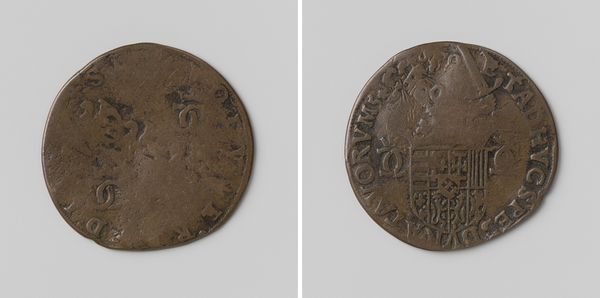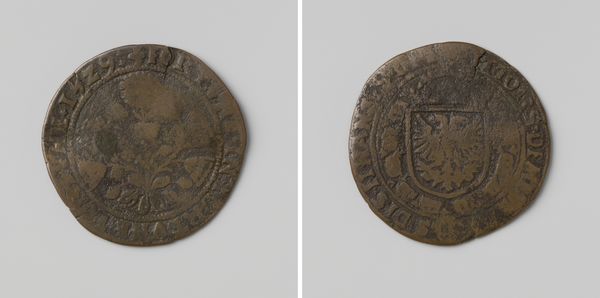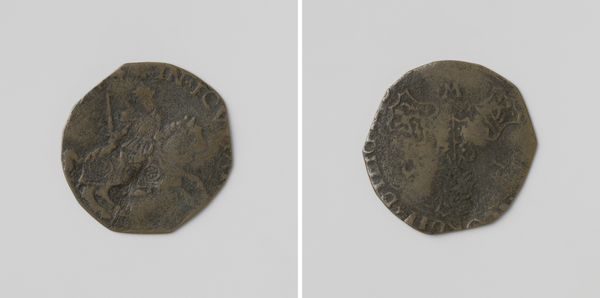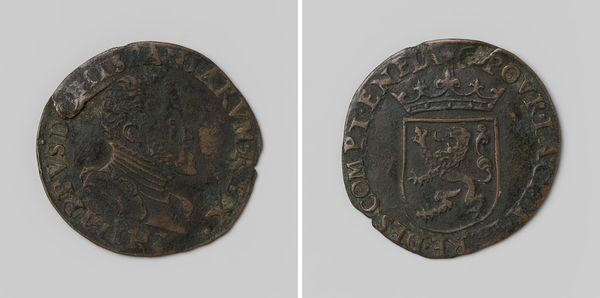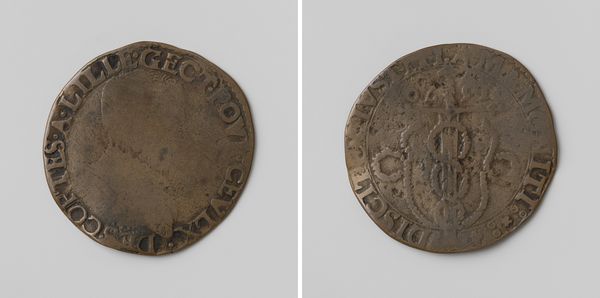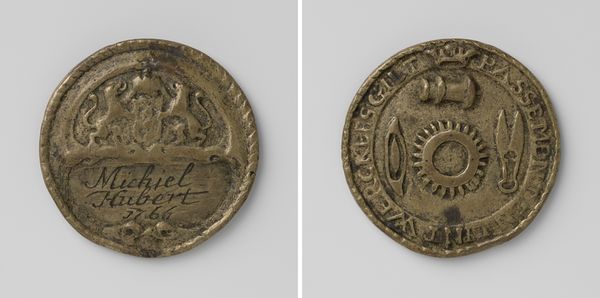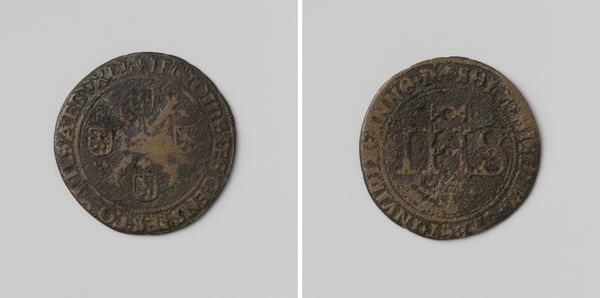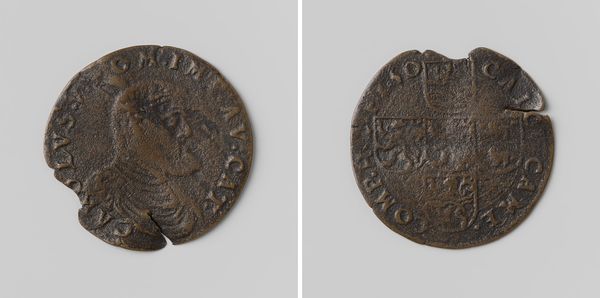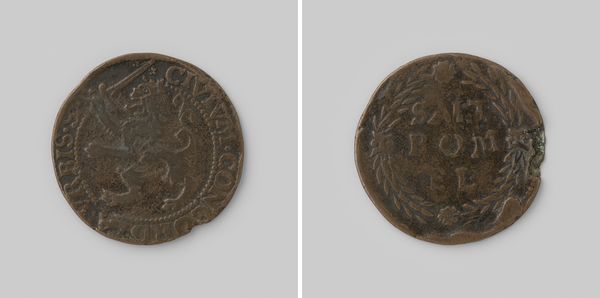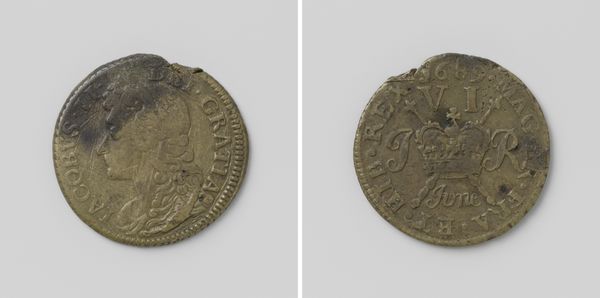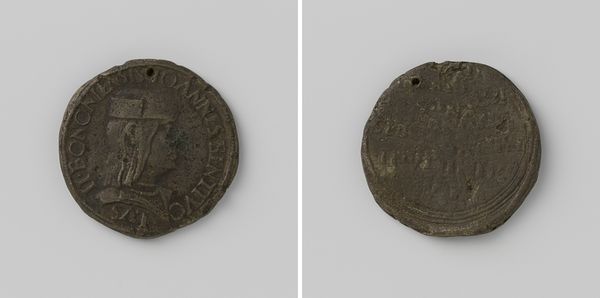
drawing, metal, intaglio, relief, ceramic, bronze, sculpture
#
drawing
#
metal
#
intaglio
#
relief
#
ceramic
#
bronze
#
11_renaissance
#
sculpture
#
ceramic
#
coin
Dimensions: diameter 2.7 cm, weight 4.73 gr
Copyright: Rijks Museum: Open Domain
Curator: This is "Rederijkerskamer der Fonteinisten," an intaglio and metal artwork from 1573. The piece presents as two circular coin-like reliefs of what appears to be ceramic. The first image presents an alchemical device resting over the chalice, and a botanical motif with chalice and text appear in the second one. Editor: They look quite somber for such a floral motif. The material has aged and tarnished, giving them an air of gravity. It reminds me that these weren't mere decorations. What’s the social setting? Curator: The *Rederijkerskamers*, or Chambers of Rhetoric, were literary societies popular in the Low Countries during the Renaissance. These chambers organized contests in poetry, drama, and public speaking, very popular forms of participatory civic engagement at the time. These coins probably played some part in commemorating an event or rewarding accomplishment, perhaps acting as both a medal and form of currency amongst this niche artistic class. Editor: So it's an emblem of a specific artistic community—interesting. What does it suggest about how they conceived of their own work? Looking at the design again, both objects on the tokens centre on a vase. There is obviously value ascribed to display, with a secondary meaning to support it. Curator: Yes, the prominence of botanical imagery, stylized text, and ornate chalice forms reflects Renaissance aesthetics and the values of eloquence, knowledge, and, in some cases, of a proto-scientific approach of its subject, in this case literature. The use of relief printing underscores how humanist texts could spread far through printed material. Consider it in contrast to other media present in its time period; painting served largely elite interests, whereas the relative affordability of token or engraving technologies aided the rise of art as a kind of business as much as it was an avocation. Editor: Absolutely. And even the decision to depict a flower rather than a figure speaks to a valuing of observation, classification, and interaction with new material systems. Curator: The creation of social structures as spaces for collaboration around artistic and rhetorical achievement, is still mirrored in social action today. From activist art collectives to experimental publishing houses and more. Editor: It makes one consider what will survive as both artwork and document of our present creative means, especially within communities that use art as their currency.
Comments
No comments
Be the first to comment and join the conversation on the ultimate creative platform.
